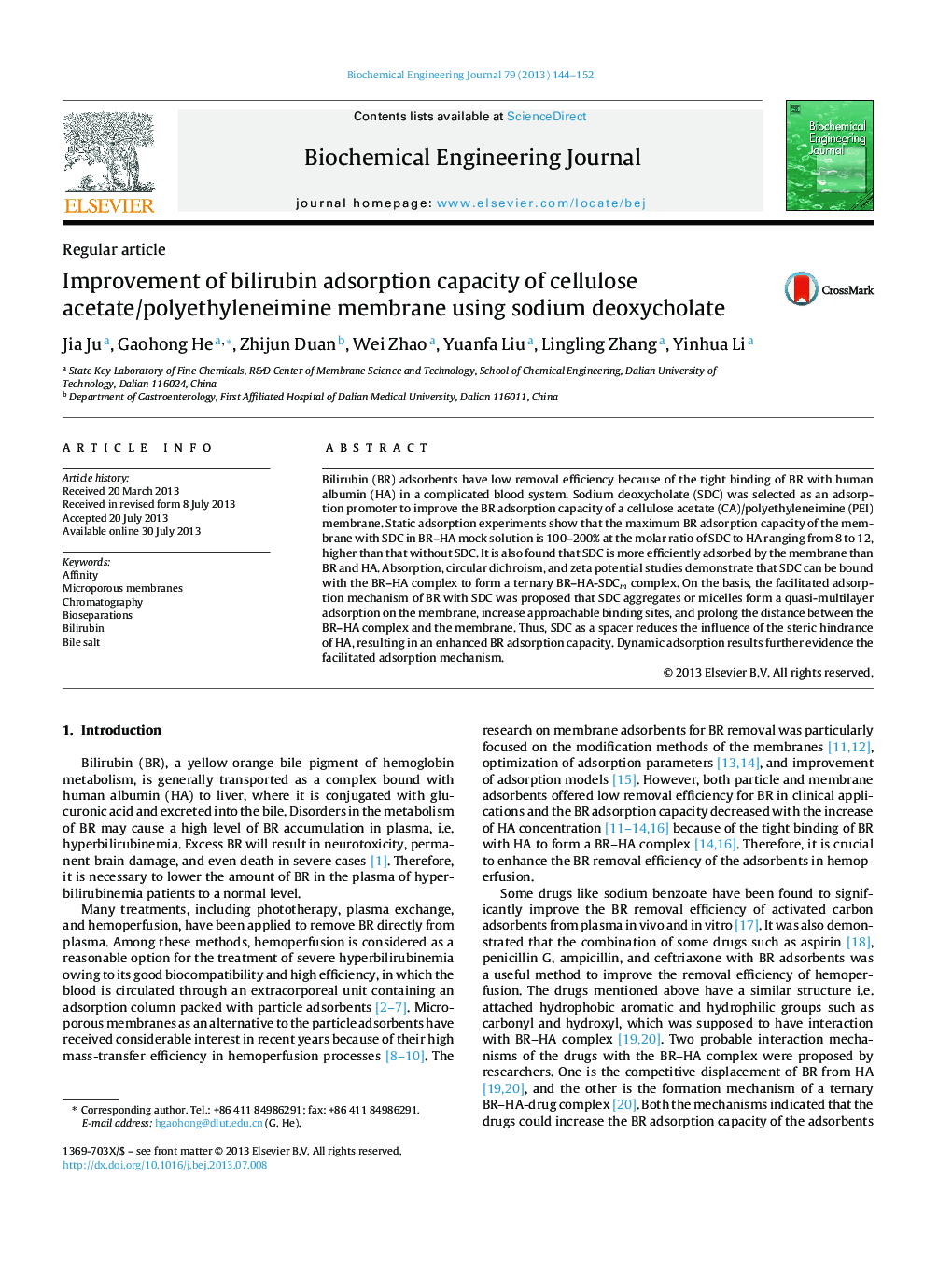| Article ID | Journal | Published Year | Pages | File Type |
|---|---|---|---|---|
| 3278 | Biochemical Engineering Journal | 2013 | 9 Pages |
•SDC is used to improve the bilirubin adsorption capacity of CA/PEI membrane.•The bilirubin adsorption capacity with SDC is increased by 100–200%.•The facilitated adsorption mechanism with SDC on the membrane is proposed.•SDC binds bilirubin–albumin complex to form a ternary complex on the membrane.•SDC acts as a spacer to reduce the steric hindrance of bilirubin–albumin complex.
Bilirubin (BR) adsorbents have low removal efficiency because of the tight binding of BR with human albumin (HA) in a complicated blood system. Sodium deoxycholate (SDC) was selected as an adsorption promoter to improve the BR adsorption capacity of a cellulose acetate (CA)/polyethyleneimine (PEI) membrane. Static adsorption experiments show that the maximum BR adsorption capacity of the membrane with SDC in BR–HA mock solution is 100–200% at the molar ratio of SDC to HA ranging from 8 to 12, higher than that without SDC. It is also found that SDC is more efficiently adsorbed by the membrane than BR and HA. Absorption, circular dichroism, and zeta potential studies demonstrate that SDC can be bound with the BR–HA complex to form a ternary BR–HA-SDCm complex. On the basis, the facilitated adsorption mechanism of BR with SDC was proposed that SDC aggregates or micelles form a quasi-multilayer adsorption on the membrane, increase approachable binding sites, and prolong the distance between the BR–HA complex and the membrane. Thus, SDC as a spacer reduces the influence of the steric hindrance of HA, resulting in an enhanced BR adsorption capacity. Dynamic adsorption results further evidence the facilitated adsorption mechanism.
